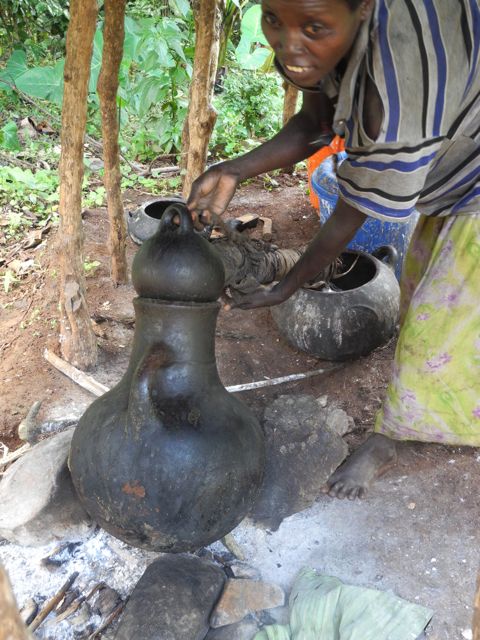 |
| We heart fasting foods and injera |
Forget "We Are The World" and erase the images of distended stomachs portrayed by the media. Ethiopia is so much more than that. They are one of the only two countries that have never been colonized (the other being Liberia) retaining their identity and certainly very proud of it. The national language, Amharic, has it's own characters. Lucy was found here establishing it as the cradle of humankind. But most of all, what stands out (and above) its African neighbors is its cuisine.
Start your day with the drink that was born here. Way before Starbucks made coffee fashionable, this drink was popular here and continues to play an important in everyday life. Grass carpets the area where the ceremony takes place, incense burned, coffee roasted and then passed around for guests to smell, freshly roasted beans ground in a mortar and pestle, placed into a ceramic pot with water and then sits on charcoal. It doesn't get fresher than this. From Addis to Axum, modern cafes line the streets and a typical coffee ceremony can be found at nearly every restaurant.
 |
| Take a whiff of the freshly roasted beans |
 |
| The coffee show |
 |
| Incense and popcorn essential |
|
|
|
|
|
|
|
|
|
|
|
You'll also want more of that coffee post-injera. Injera is to Ethiopia as rice is to Asia. If you've never had it, think spongy, slightly sour pancake. You either really love it or really hate it. Thankfully, after pizza or steak, we keep coming back for more. In fact, we prefer eating the
habesha food over
faranji fare. A trip to the countryside and you'll find fields and fields of
teff, the main ingredient for injera. And you'll only find it here. Yearly, they plant nearly 1.4 million hectares (about the size of Connecticut) of the stuff. Gluten free and rich in nutrients; it is also a great source of carbohydrates and fiber.
 |
| Kitfo and shiro |
|
|
What's also so great about Ethiopian food is not just it's uniqueness but it's ability to please all palates and diets. To satisfy carnivores, there's
tibs (sauteed meat with onions, peppers, and tomatoes) on nearly every menu or maybe some
kitfo if you're feeling adventurous
- Ethiopian's answer to steak tartare. In Soddo, we had the freshest
kitfo accompanied by fresh farmer's cheese and
gomen (collard greens). But if I were to live here, I could definitely turn into a vegetarian or even vegan (big maybe). The "fasting" or meatless selections have lots of variety and are so tasty! Since orthodox Christians here "fast" (read: don't eat meat), they created a whole menu just for Wednesdays and Fridays - vegetarian heaven. Typical foods include:
gomen (collard greens or spinach)
, shiro (ground split peas made into a gravy)
, aterkik alicha (yellow split peas),
misir (red lentils), and carrots and beans sauteed with onions; many of the veggies and legumes made either with mild spices or with a nice spicy kick of
berbere.
So, hurry run to the nearest Ethiopian restaurant and
melkam megeb!
For you Brooklynites, start with these two:
Ghenet Brooklyn
348 Douglass Street (Park Slope)
(718) 230-4475
www.ghenet.com
Bati
747 Fulton Street (Fort Greene)
(718) 797-9696
www.batikitchen.com




















































